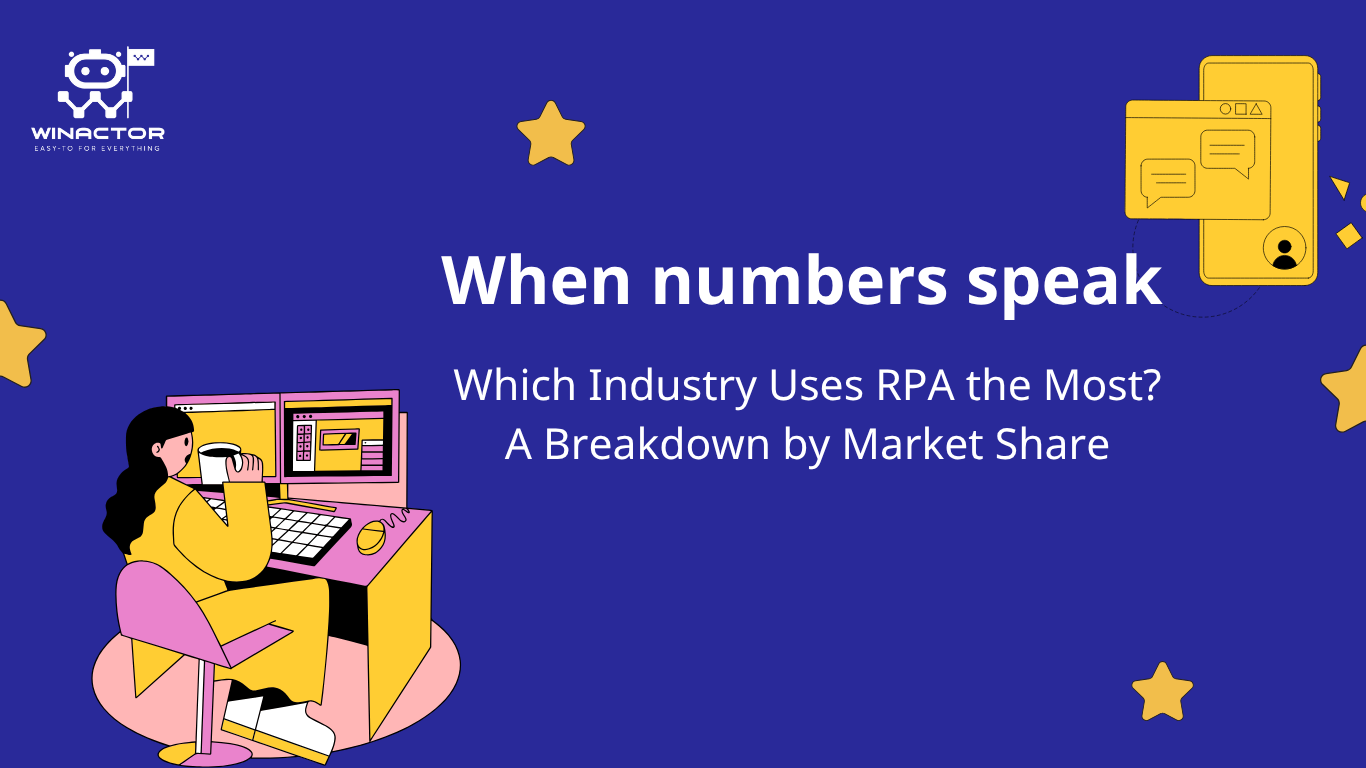Until now, many people often thought that “robots are objects that you can hold and see.” But we don’t know that there are still software robots in the world today. They are technological solutions used on computers and some other tools. Among them is the robot that automates the RPA process. The following article of WinActor will introduce you to the popular RPA bots today.
What is a bot in RPA?
RPA’s full name is Robotic Process Automation. This is a technological solution used to solve repetitive tasks of fixed logic. Software robots include RPA bots that work together in an automated process.
For RPA bots to work, you need to program them by performing a few simple programming steps. The software robot will memorize and copy the commands; it then executes the process sequentially.
In addition, RPA’s strength is compliance, so emotions do not dominate it; RPA can work in concentration with absolute precision. Since then, labor productivity has significantly improved, the SOI index will always reach the ideal level.
Currently, there are 2 types of RPA bots: Attended RPA and unattended RPA.
Attended bot RPA
Attended bot RPA is also known as a personal virtual assistant. Because it works on a certain server, supporting employees to perform repetitive tasks. When employees want to get RPA bots to work, they simply set up a process for them. Since bots work 24/7, you can call them anytime you need. In addition, Attended bot RPA can run on some other systems such as workstations or cloud computing. Therefore, bots bring businesses a lot of benefits:
- Increase productivity
- Reduce average processing time
- Enhance customer experience
- Increased compliance
Unattended bot RPA
Unattended bot RPA was developed to automate the entire process. It works independently without human intervention. Unlike attended RPA, the unattended bot can operate on a large server. Bots are triggered either by a preset schedule or by an in-process logic. An unattended bot helps businesses handle cumbersome tasks, analyze and aggregate data quickly. Besides, it also gives companies a lot of benefits such as:
- Reduce operating costs
- Increase productivity
- Error removal
- Freeing employees from repetitive work
- Improve compliance

What can RPA bots do?
Currently, most office workers are dealing with a huge amount of repetitive and boring tasks every day. These are tasks such as data entry, invoice processing, order creation, etc. Although all this work is very important regarding the quality of customer service, it makes the staff boring. Software robots can replace humans in performing these tasks. So why don’t we just use RPA instead of letting manual labor do the work?
RPA bots can handle the following tasks:
- Get data from multiple apps
- Fill in the same information in different places
- Enter data, copy text
- Aggregate data from various systems
Pre-set rules and schedules control all these tasks. In addition, Software Robots can also perform many complex functions by interacting with any application or website.
For manual workers, handling tasks continuously for a long time will distract them, leading to inefficiency. Instead, businesses should take advantage of RPA as a useful labor tool to help them solve these difficulties. Software robots will help employees get rid of boring jobs, and they can be free to be creative and do more valuable work.
Read more: Which factors should you consider while selecting a RPA Software?
What are the benefits of bots in RPA?
Labor productivity
As you know, RPA bots have unlimited working time. It can work 24 hours/day and 365 days/year, while humans only have 8-10 hours to work each day. But RPA is not, and businesses can activate it at any time of the day. Even at night, it can still work well. From there, enterprises will improve labor productivity significantly, and the profit rate will increase rapidly.
Increase accuracy
Since emotions do not influence the RPA bot, it can work with extreme concentration with absolute precision. Software robots always follow certain rules and follow the process steps sequentially. Most of the time, we will not see any errors in the RPA bot during its work. Therefore, businesses can use RPA bots to optimize automated processes and improve system quality.
Working speed
In fact, RPA’s speed of working and processing information is much faster and more efficient than that of humans. On average, RPA’s processing speed is 2 times faster than that of humans. Bots can help employees quickly aggregate data across different systems.
One of the most typical examples is the case of a bank employee who wants to confirm customer information on the system to serve credit card verification and provision. Normally, manual labor will take about 3 to 4 days to be able to secure customer information. But with RPA, both are different, and it will shorten the time significantly. The bots only take a short amount of time to aggregate all customer data for employees. Their job is just to confirm the information and conduct the appraisal. That proves that the RPA bot works many times faster than us, and its benefits are immense.
Save labor cost
Because the software robot has unlimited working time, each RPA bot can replace 2 to 3 manual laborers. Enterprises only take one person to manage the system of RPA bots. Therefore, with automated robots in the production system, enterprises will save labor costs and improve labor productivity.
Hopefully, the article will help you have an overview of RPA bots and their benefits. Each bot can have a different task in the automation process. For analytical office work, choosing RPA is an optimal solution to help businesses improve work efficiency. In addition, software robots also help companies relieve employee pressure, save labor costs and increase work accuracy.
Read more: Top 12 benefits of RPA (Robotic Process Automation)
Note that, before you want to apply Robotic Process Automation to your process, you need to evaluate the compatibility of RPA. Some of the reasons for the unsuccessful implementation of RPA are inappropriately choosing what techniques to automate or lacking a coherent long-term plan supported by strong governance. You should not apply automated robot technology too quickly without carefully understanding because this will cause waste and time-consuming business.

WinActor is an RPA software solution by NTT DATA Corporation to help businesses master technology, create breakthroughs in the digital age 4.0.





